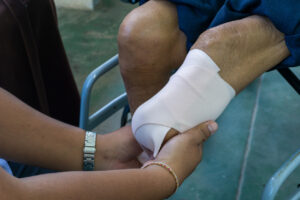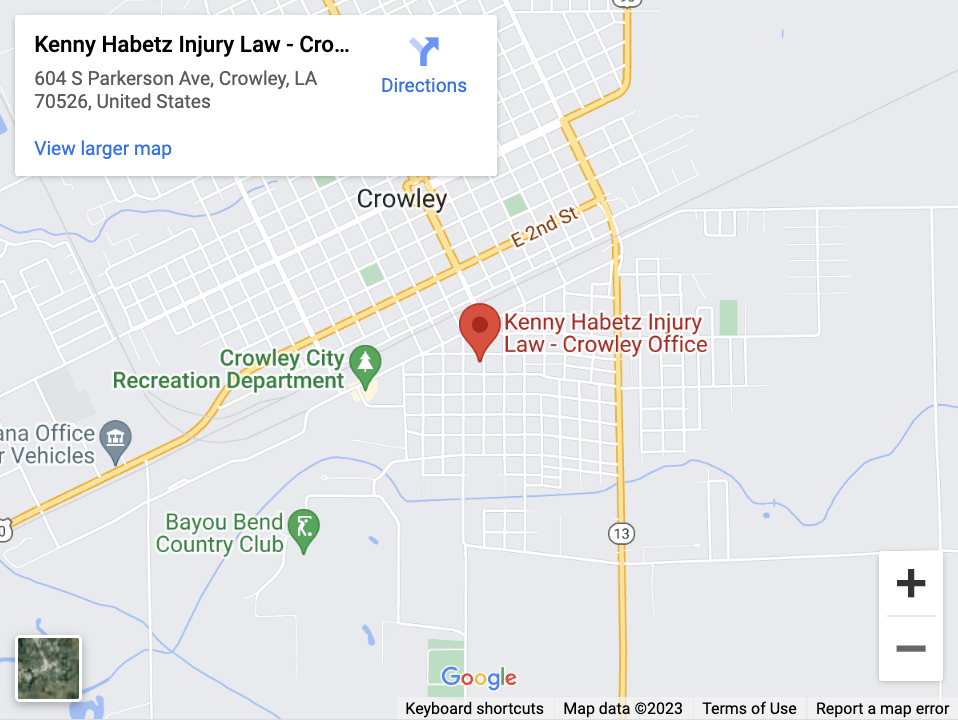
About two million Americans currently live with amputations. This number includes everything from amputated fingertips to entire arms and legs, in addition to the people who have lost other body parts, like noses or ears.
Amputations have severe effects. Amputees can suffer from physical disabilities, disfigurement, and emotional distress. They may lose the ability to work and participate in activities they love.
The Structure of Your Body

Your body is formed from multiple layers. Each layer performs a different purpose.
Most of your body includes structural support provided by bones or cartilage. These tissues give your body its shape and help hold up your weight. Most also protect your internal organs. Thus, the bones and cartilage of your rib cage protect your heart and lungs.
Ligaments hold the skeleton together. The tough, elastic nature of the ligaments helps prevent your joints from hyperextending. The ligaments also guide the movement of the joint. For example, your knee bends in only one direction because of the anterior and posterior cruciate ligaments.
Muscles attach to your skeleton through tendons. They move your body by contracting and relaxing.
A layer of fat and connective tissues attaches your muscles to the skin. Your skin has three layers that seal your body from contaminants and pathogens. It also keeps moisture inside your body, preventing dehydration.
Types of Amputations
Amputation injuries happen in two ways:
Traumatic Amputations
Traumatic amputations happen when the force of the accident dismembers the body. Thus, if you lost your hand when a power tool severed your wrist during a construction accident, you suffered a traumatic amputation.
Under some circumstances, doctors can reattach or “re-plant” a severed body part. They will typically only attempt this operation when your body part was removed cleanly and remains viable. Some factors doctors will use to decide whether to try this complicated surgery include:
- The condition of the severed body part
- How quickly you reached the hospital
- Any contamination of the wound by chemicals, dirt, or microorganisms
- Your ability to tolerate the surgery
For example, suppose that you lost a finger in a dog attack. Your doctor may decide whether to replant the severed finger based on the damage caused by the dog bite. The doctor might also consider the amount of dirt and dog saliva contaminating the finger and the stump.
Surgical Amputations
Doctors perform surgical amputations to remove a damaged body part. If your foot got crushed in a car accident, your doctor may decide to amputate your foot.
The amputation process generally involves these steps:
- Identify where the healthy tissue ends and the damaged tissue begins
- Remove damaged tissue while preserving as much healthy tissue as possible
- Tie off all exposed nerves and blood vessels
- Smooth the bone
- Form a flap to create a stump over the bone
The surgeon may or may not close the incision. The benefit of closing the incision is that the risk of infection drops. The benefit of keeping it open is that the doctor can easily remove additional tissue if necessary.
Once the stump heals, you can get fitted for a prosthetic. The prosthetic could restore some function and may even reduce the amount of disfigurement you experience. But even the most sophisticated prosthetic device will leave you with some disabilities.
Causes of Surgical Amputation Injuries
Almost 70% of amputations performed in the U.S. result from disease rather than trauma. Leading causes of lower limb traumatic amputations include car accidents and other traffic crashes. Upper limb amputations often result from workplace accidents.
Doctors perform surgical amputations for many reasons, including:
Crushed Bone
A comminuted fracture happens when a bone breaks into three or more pieces. If doctors can reconstruct the bone, it can heal. But in some cases, the remaining pieces are too small to reassemble using screws and plates.
In other situations, missing pieces might prevent reconstruction. Doctors may need to amputate when they cannot repair a shattered bone.
Vascular Damage
Every cell in your body requires oxygen to live. Blood delivers oxygen and carries away waste products like carbon dioxide. When the blood vessels get damaged, they cannot supply blood to your tissues, and the cells begin to die.
As the dead cells decompose, they release toxic waste products into your blood that cause gangrene. Instead of risking gangrene, doctors will often amputate body parts with damaged blood vessels.
Nerve Damage
Nerves carry signals between your body and brain. When your nerves get damaged, you can lose sensation in the body parts connected to those nerves. You might not notice that your injuries from your accident have developed infections or not healed properly. By the time you seek treatment, you may have experienced significant tissue damage that requires amputation.
Severe Burns
Doctors do not often amputate for severe burn injuries. But in some cases, doctors may recommend amputation when the burn has damaged the blood vessels.
Complications from Amputations
Amputation injuries have a very high complication rate.
Some common complications experienced by amputees include:
Phantom Sensations
Roughly 80% of amputees experience phantom sensations. Phantom sensations appear to emanate from the amputated limb.
Phantom sensations can include:
- Pain
- Aching
- Clenching
- Tickling or itching
Doctors used to think that phantom pain was a psychological phenomenon. They now know that the brain experiences real sensations, but it uses an outdated map of the body that assigns them to the wrong area.
These sensations happen in a few ways. Nerves from other parts of the body might mistakenly stimulate the region of the brain associated with the amputated part. In other situations, nerves from the stump might send and receive signals intended for the missing body part.
Emotional Distress
Over 30% of amputees experience depression.
These feelings of emotional distress can arise from many issues, including:
- Social anxiety about how others will react to the disfigurement
- Concern for how to earn a living without the missing body part
- Worry about the costs of medical treatment, therapy, and prosthetics
In some cases, counseling can help the patient get past these feelings. In other cases, depression can lead to other problems, like suicidal thoughts and substance abuse.
Can I Get Compensation For A Louisiana Amputation Injury?
In Louisiana, you can seek compensation when someone else’s intentional or negligent actions caused your amputation. This compensation can cover both your economic and non-economic losses, from medical bills and lost wages to pain and suffering. An amputation injury lawyer can fight to recover money for your losses on your behalf.
Contact A Dedicated Lafayette Personal Injury Lawyer for Help with Your Amputation Injury Case
Amputations can have catastrophic effects and require expensive treatment and therapy. The award-winning team at Kenny Habetz Injury Law has recovered millions of dollars for injured clients throughout Louisiana. Contact us today, you can call (337) 399-9000 to schedule your free consultation with an experienced Lafayette amputation injury lawyer today.


